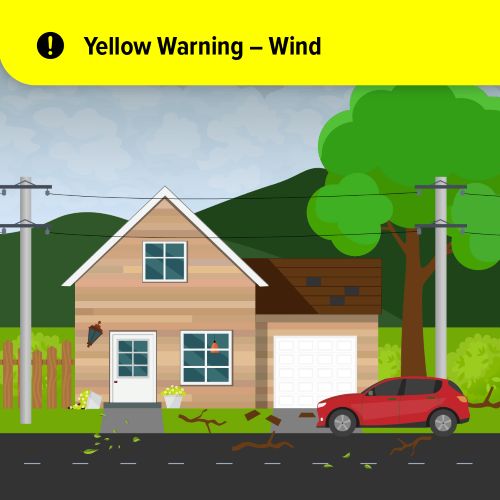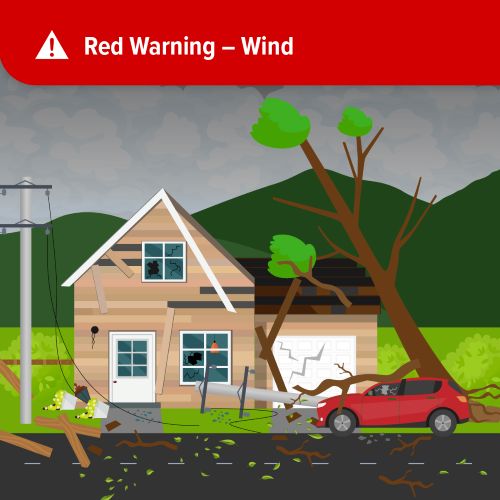Colour-coded weather alerts
Backgrounder
As of November 26, 2025, all weather alerts will be colour coded. The colours will tell you at a glance what risks the weather may pose to you. Every type of weather alert—Warnings, Advisories, and Watches—will have a colour when it is issued.
Alert colours
Yellow
- Hazardous weather may cause damage, disruption, or health impacts
- Impacts are moderate, localized, and/or short-term
- Yellow alerts are the most common
Orange
- Severe weather is likely to cause significant damage, disruption, or health impacts
- Impacts are major, widespread, and/or may last a few days
- Orange alerts are uncommon
Red
- Very dangerous and possibly life-threatening weather, will cause extreme damage and disruption
- Impacts are extensive, widespread, and prolonged
- Red alerts are rare
What the colours mean
The same weather can have different impacts depending on timing, location, and population. That's why each weather alert now has a colour to tell you the level of impact possible in your area, so you can prepare appropriately.
Here's an example of the different impacts of yellow, orange, and red wind warnings.
Important: These images are demonstrative; they do not show every potential impact of wind warnings.
Figure 1: Potential impacts from a Yellow Warning – Wind

Long description
Representation of the potential impacts of a Yellow Warning – Wind. A house with a tall tree beside it, a red car, and hydro poles in front. No lights are on in the house, branches are scattered in front, a potted plant has blown over, and there is visible damage to the roof.
In a Yellow Warning – Wind, you may see:
- Some short-term utility outages
- Larger tree branches broken
- Risk of injury from flying or falling debris
Figure 2: Potential impacts from an Orange Warning – Wind

Long description
Representation of the potential impacts of an Orange Warning – Wind. A house with a tall tree beside it, a red car, and hydro poles in front. No lights are on in the house, a window is broken, and smaller branches are scattered around. Both potted plants have blown over, the hydro cable has broken, and larger branches have fallen onto the roof and car, causing significant damage.
In an Orange Warning – Wind, you may see:
- Widespread utility outages
- Some roof damage
- Small-to-medium trees snapped
- Increased risk of injury from flying or falling debris
Figure 3: Potential impacts from a Red Warning – Wind

Long description
Representation of the potential impacts of a Red Warning – Wind. A house with a tall tree beside it, a red car, and hydro poles in front. No lights are on in the house and multiple windows are broken, with damage to the house's siding. Smaller branches and significant debris are scattered around. A hydro pole and power lines have blown over. The tree has fallen onto the roof of the house, causing significant damage. Another large branch has fallen onto the car.
In a Red Warning – Wind, you may see:
- Long duration, widespread utility outages
- Structural damage to homes and buildings
- Significant damage to trees, including orchards and parks
- High likelihood of injury due to flying or falling debris
The message is simple: Know the colour, know the risk.
No matter the colour, you should always read the full alert text for important details and safety guidance.